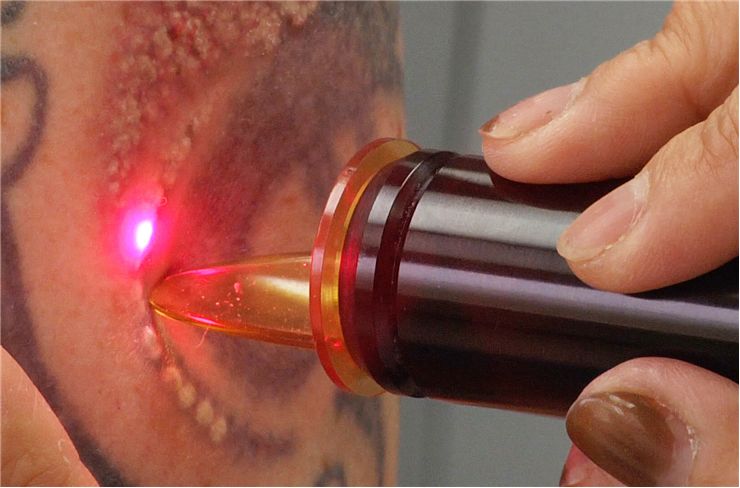Tattoo Removal Methods - Tattoo Removal Benefits and Risks
Statistics from 2012 say that 14% of those that have tattoos, regret them. People dissatisfied with their tattoos or those that have health problems with them sometimes decide to remove them. There are few methods of tattoo removal and we'll mention some of them here.
Dermabrasion is one of the methods used for tattoo removal before the development of laser tattoo removal methods. It is removal of upper to mid layers of the skin with mechanical abrasive devices like wire brush, diamond wheel or fraise, or sterilized sandpaper. This method can leave scars with tattoos that are too deep.
Salibrasion is a very old method of abrasion where the area with a tattoo is rubbed with crystals of salt. This method normally performed under local anesthetic.
Trichloroacetic acid (TCA) is acid that removes the top layers of skin along with the tattoo.
Cryosurgery is application of extreme cold to destroy upper layers of skin. Physicians use liquid nitrogen, carbon dioxide, argon, or dimethyl ether – propane to cool the skin and destroy its cells that hold the pigment.
Surgical method (excision) consists of cutting pieces of a tattoo by a surgeon. It is usually used for small tattoos and when the tattoo is cut out skin from either side is sewn together.
Saline Injections are also sometimes used to remove tattoos but just blur it and are because of that used very rarely.
The most common method of tattoo removal today is laser removal. When skin receives small foreign particles it gets rid of them by normal human growth and healing processes. Tattoo particles are too large for that which makes tattoos practically permanent. Laser breaks down the ink particles in the tattoo and leaves to the body to absorb them. But not all colors are equally easy to remove with laser. Yellow, green and fluorescent colors are harder to remove while darker colors and especially black are the easiest.
Q-switched lasers (special lasers for tattoo removals) rarely leave scars but removal has to be done in more tries than one. Short-pulsed lasers were used on tattoos for the first time in 1960s. In 1979 an argon laser was used for a partial tattoo removal on 28 patients. Experiments continued and in 1980s they shown that there is no detectable mutagenicity in tissues following irradiation with lasers which proved they were safe for use on humans. First commercial lasers for tattoo removal appeared in late 1980s. These lasers had to fulfill few conditions so they could work well on tattoos: they must penetrate deep enough into the skin to reach to the tattoo; their color must be absorbed more by the tattoo pigments then by the surrounding skin (so that they don't destroy skin); and duration of the pulse of the laser energy must be long enough so a pigment can be heated and short enough so the pigment doesn't heat surrounding skin and damage it (this duration is on the order of nanoseconds). Q-switched lasers fulfill these conditions and work reasonably well.
